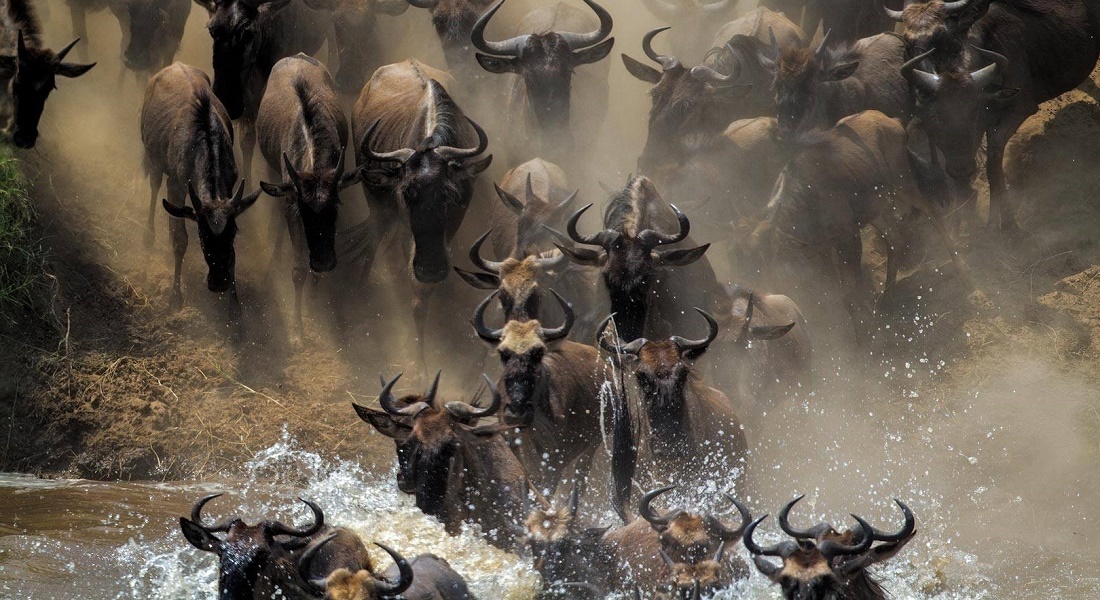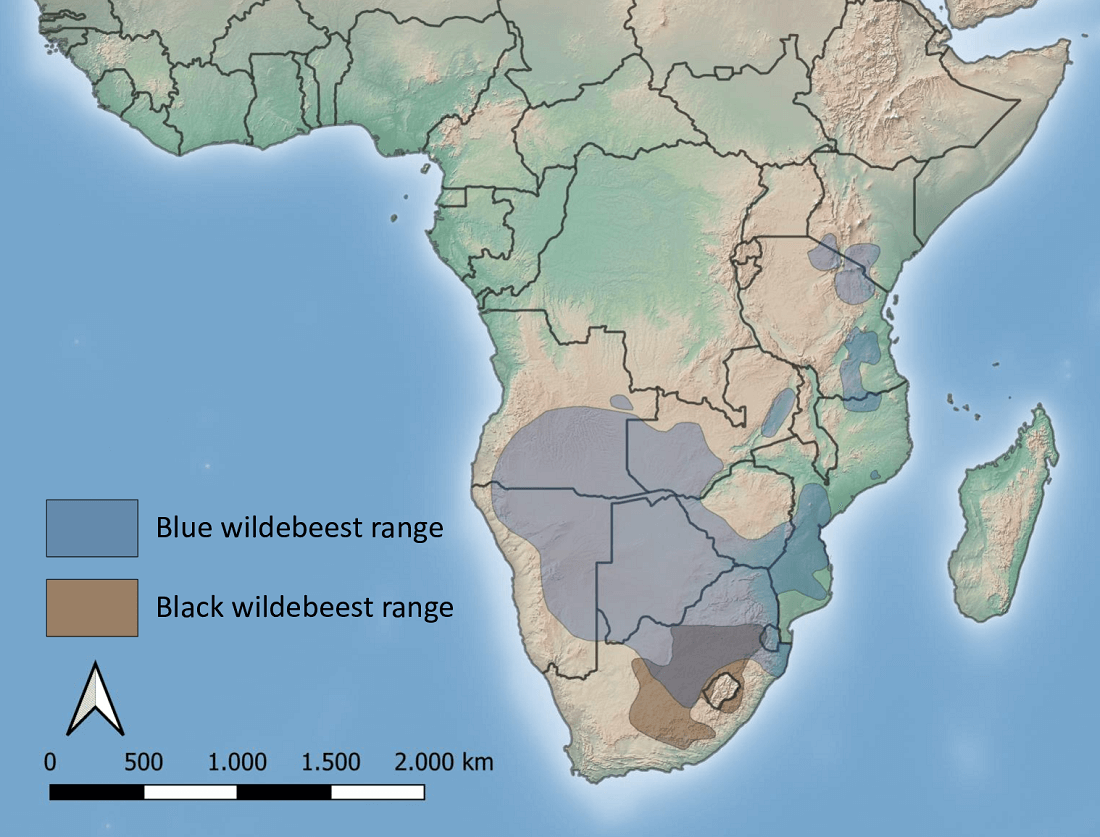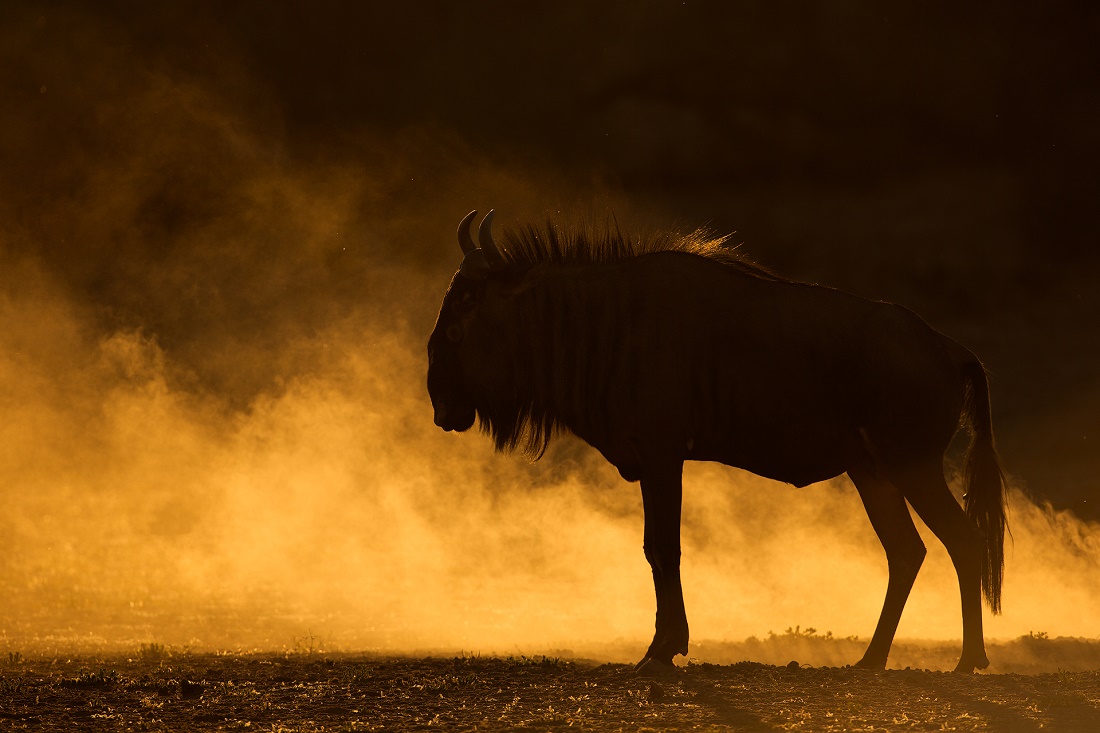Iconic savanna mammals face genetic problems due to fences and roads
Wildebeest migrations have become a rarer sight in Africa as humans continue to interrupt their historic migratory routes with roads, fences, cities, livestock and farmland. This has led to genetic decay in those herds that are no longer able to roam freely, according to new research led by the University of Copenhagen.

Whether by way of Attenborough, Disney or National Geographic, the iconic scene is familiar to many. The ground trembles and clouds of dust swirl as enormous hordes of large animals thunder across the African savanna, cross rivers en masse and are picked off by lions, hyena and crocodiles. The annual migration of 1.3 million wildebeest through Tanzania’s Serengeti and Kenya’s Masai Mara attracts hundreds of thousands of tourists, and the phenomenon has put the Serengeti on UNESCO's list of World Heritage sites. Besides its majestic sight, the migration of this emblematic species is important for the ecological functioning of ecosystems.
Unfortunately, epic annual migrations of this scale are only found in a few places on the African continent now. In some areas, roads, fences, farms and urban sprawl have fractured the historic migratory routes of wildebeest herds and prevented them from roaming far and wide in search of fresh grass and water. A new study led by researchers from the University of Copenhagen shows that the genetic health of wildebeest has suffered as a consequence.
WHO GNU?
- There are two species of wildebeest, or gnu; The common wildebeest – also known as blue wildebeest/brindled gnu (Connochaetes taurinus) and the black wildebeest/white-tailed gnu (Connochaetes gnou). The common wildebeest/gnu is by far the most abundant and widespread species (see map below).
- Wildebeest are grass-eating ungulates (or hoofed mammals) in the Bovidae family, which also includes true antelopes, cattle, goats, sheep, and other even-toed horned ungulates. Among its closest relatives are the hartebeest, blesbok and bontebok antelopes.
- The common wildebeest lives on the grasslands and savannas of eastern and southern Africa (Kenya, Tanzania, Botswana, Zambia, Zimbabwe, Mozambique, South Africa, Eswatini and Angola). Though now extinct in Malawi, they have been reintroduced in Namibia.
- It is estimated that there are approximately 1.55 million common wildebeest and 18,000 white-tailed wildebeest.
- The largest population of common wildebeest, the Serengeti-Mara population, is estimated to number about 1.5 million animals.
"No one ever knew that this affected the genetics of wildebeest. But our results clearly show that wildebeest populations which no longer migrate, but have historically done so, are simply less genetically healthy than those that continue to migrate. And this weakens their chances of long-term survival," says Rasmus Heller, an associate professor at the Department of Biology and one of the new study’s lead authors.
The results demonstrate that the genetic decline of non-migratory populations is reflected in several of the parameters by which genetic health is measured in nature conservation.
"Wildebeest that can no longer migrate have lower genetic diversity, are more genetically isolated and are more inbred. We expect this to lead to lower survival, reduced fertility and other negative effects on fitness," says Xiaodong Liu, one of the study’s first authors and a postdoc at the Department of Biology.

Vulnerable to climate change
Overall, this iconic savanna grazer is not currently threatened. But in the long term, wildebeest herds that can no longer migrate will likely be worse off, for example, in the face of climate change.
"The long-term consequence is that populations with low genetic diversity are less equipped to cope with the effects of environmental changes. Their evolutionary potential is reduced. So, if climatic changes continue to occur, there isn’t as much genetic variation for them to work with to adapt – which could ultimately threaten their survival," says Rasmus Heller.
Researchers analyzed the whole genomes of 121 wildebeest from their entire range, which spans from South Africa to Kenya. This is the first time that scientific researchers have studied the genetic effect of migration in wildebeest.
"Because we studied the genomes of many wildebeest from virtually their entire range, we have been able to make a general genetic comparison of migratory versus non-migratory populations. And because we witness a consistent difference across multiple locations, the conclusion is clear. Indeed, we can say that the overall negative effect is evident in those wildebeest that have been prevented from migrating – regardless of where they live on the continent," says Xiaodong Liu.

Planned road and rail corridors threaten the last great migration
While the total number of wildebeest remains fairly stable, many local populations have experienced steep declines and several have even collapsed in recent decades.
One hundred and fifty years ago, many wildebeest populations made great migrations. However, forty years ago, only two large intact wildebeest migrations remained in Africa: the famed Great Migration of the Serengeti-Mara and one in the Kalahari Desert of southern Africa.
MIGRATING WILDEBEEST UNDER PRESSURE
The only remaining major wildebeest migration is the "Great Migration" in the Serengeti-Mara. Here, approximately 1.3 million wildebeest, accompanied by about 200,000 zebras and 400,000 gazelles, cover up to 3,000 kilometers annually in a clockwise cycle that follows seasonal rainfall patterns. But only the wildebeest and zebra from the Serengeti cross the Mara river into Kenya’s Masai Mara.
Due to limited source material on African wildlife populations prior to the mid-1800’s, the total number of historical wildebeest migrations is uncertain. However, it is known that migrations comparable to that of the Serengeti-Masai Mara population have been lost.
An example of this relates to two wildebeest subspecies known as the white-bearded wildebeest – the Western white-bearded wildebeest, which makes up the Serengeti-Mara population, and the Eastern white-bearded wildebeest, whose migration was centered around Kenya’s Kajiado County. From early European explorers and the first big game hunters, we know that both of these subspecies migrated a great deal historically. And, that they had very large populations, presumably of approximately similar size. While the Western white-bearded wildebeest was protected in the Serengeti-Mara from the early 1950s, increased human presence and activities dating back to the early 1900’s put mounting pressure on the Eastern white-bearded subspecies. Today, only 6,000-8,000 Eastern white-bearded wildebeest remain and are divided into many, small isolated populations.
"However, in Botswana in particular, fencing to protect cattle from coming into contact with migratory wild animals was put up in recent times. Botswana's Kalahari population declined from roughly 260,000 in the 1970’s to fewer than 15,000 in the late 1980’s. So today, the only remaining large population is that of the Serengeti-Mara. But the Serengeti-Mara migration is also threatened by plans for roads and rail corridors through the area, which worries many," says Mikkel Sinding from the Department of Biology, another of the study's first authors.
"As a species, wildebeest are dependent on migrations to support their large numbers. They can survive in resident, non-migratory populations, but their numbers simply shrink when they cannot migrate. For example, we see this in the populations in the other parts of Kenya and Tanzania that have been prevented from migrating and whose numbers have decreased as a result," says co-author Joseph O. Ogutu, a senior statistician in the Biostatistics Unit at the University of Hohenheim, who adds:
"The migrations of wildebeest make them a keystone species in ecosystems, as their grazing keeps vegetation healthy, transports and distributes nutrients, while they themselves serve as prey for predators and carrion for scavengers. Therefore, it isn’t just the iconic animal that we threaten when we prevent them from migrating – but many other species as well. And to that, we might add the enormous amount of tourism revenue that benefits governments and local communities."
Call to decision-makers
The researchers hope that the new results will inspire investigations into the genetic effects of reduced migration among other species. And they hope that decision-makers keep the consequences in mind:
"The study shows us that wild animal species, for whom migration is an essential part of their biology, struggle to survive in an increasingly human-dominated world, unless special attention is paid to preserving their old and natural migratory routes. As such, we hope that people will be more cautious about continuing to disrupt these routes. This concern is not just with regards to wildebeest, but also for other migratory species in Africa and elsewhere," says Rasmus Heller. He concludes:
"If we want the species to not just exist for, say, the next 50 years, but to thrive and actually survive in the much longer term, we need to halt the genetic decay caused by curtailing their natural migration routes.”
ABOUT THE STUDY
- The scientific article for this study is published in the renowned journal, Nature Communications.
- The researchers behind the study are from the Department of Biology, Novo Nordisk Foundation Center for Basic Metabolic Research, the Research Unit at Psychiatric Centre Copenhagen, Novo Nordisk Foundation Center for Protein Research and the Globe Institute at the University of Copenhagen; USDA, ARS, U.S. Meat Animal Research Center (USMARC), USA; CIIMAR – Interdisciplinary Centre of Marine and Environmental Research – University of Porto, Portugal; Biostatistics Unit, Institute of Crop Science, University of Hohenheim, Germany; Department of Biology and Department of Environmental Management, Makerere University, Uganda.
- The study was supported by the Carlsberg Foundation and the Villum Foundation, among others.
Contact
Rasmus Heller
Associate Professor
Department of Biology
University of Copenhagen
rheller@bio.ku.dk
+45 29 29 92 27
Maria Hornbek
Journalist
Faculty of Science
University of Copenhagen
maho@science.ku.dk
+45 22 95 42 83
